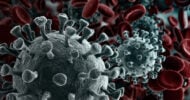Washington Post: New Orleans Hospital Still Offers Care
“The hospital is crowded and hot. Surgeries go on with the help of generators. A teen arrives by boat after giving birth in a hotel. And outside, a steady stream of homeless, frightened people seek refuge.
This was the scene Tuesday at New Orleans’ Ochsner Clinic, the eye of the hurricane as far as medical care is concerned.
Federal officials said that 2,500 patients in the drowning city were being evacuated because at least seven hospitals in Orleans Parish were threatened by the loss of their power generators and other problems.
Perched a lofty 8 feet above sea level in Jefferson Parish, Ochsner is one of the few in the area still up and running.”
Houston Chronicle: Power going out at New Orleans’ VA hospital
“Gruner said plans are being made to move the ventilator patients to another facility within New Orleans or air evacuate them to another VA hospital. There are 154 patients at the New Orleans VA hospital, and about 700 people who have sought refuge in the building. The building is surrounded by water, Gruner said. VA officials are working to coordinate military aircraft support.
Tom Flanagan, director of Life Flight emergency transport at Memorial Hermann Hospital, said a patient in need of a liver transplant was on her way to Houston from Oschner Hospital in New Orleans this morning.”
Times-Picayune: In a flood, hospitals become the rescued
“As floodwaters rose around Charity Hospital, nurses hand-pumped ventilators for patients who couldn’t breathe. Helicopters landed on the garage to airlift critically ill babies. Doctors canoed supplies to and from Charity and three nearby hospitals . . .
. . . Charity held 300 patients, but its generator had failed and the backup generator was running out of diesel fuel. Police were working to get more generators to the hospital. The most critically ill were being evacuated Tuesday; the rest would go over the next five days.
Outside Charity, a boat pulled up carrying a man doubled over in pain.
‘Where are we going to put him? We’re the rescuee now. People coming in here, it’s like running into a burning building looking for shelter,’ nursing supervisor Ray Campo said.
Water was three to four feet deep in the street; in the hospital, halls were dark and a bit slippery. Top administrators carried supplies up and down darkened stairs. Everyone needed flashlights to get around.”
MedPage Today: Hospitals Evacuate in Wake of Rising Waters From Katrina
While most of New Orleans headed for high ground as Hurricane Katrina roared toward this city, the staff at Tulane University Hospital, anticipating flooding, also moved the emergency department to higher ground — the second floor. Not enough. Not nearly enough . . .
. . . ‘We’ve now lost one of our backup generators,’ Troyer-Carawy said in a television interview as the day wore on, ‘so we have, you know, enough portable generators to provide the critically needed care for our patients, but if the water continues to rise, we will lose all of our backup generator power in the building. We’ve already lost air, suction, and water.'”







![Working patients and health care [PODCAST]](https://www.kevinmd.com/wp-content/uploads/Working-patients-and-health-care-190x100.jpg)
![Supporting medical resident families [PODCAST]](https://www.kevinmd.com/wp-content/uploads/Supporting-medical-resident-families-190x100.jpg)




![A tribute to primary care [PODCAST]](https://www.kevinmd.com/wp-content/uploads/A-tribute-to-primary-care-190x100.jpg)
